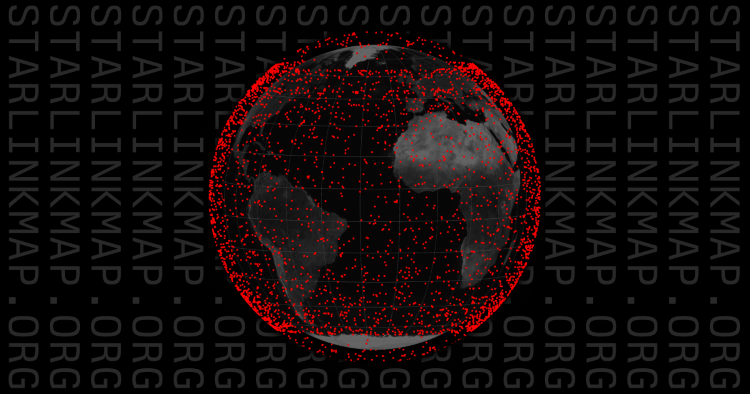In an effort to enhance the educational outreach of their Starlink constellation, there is an interactive global map of their Starlink internet satellites, which provides live coverage of every satellite in orbit around the Earth. This interactive map and information was produced by Will DePue, who is a an OpenAI programmer and openly states he is not affiliated with SpaceX or Starlink. This interactive map comes as SpaceX continues to launch Starlink satellites into orbit on a near-weekly basis with the goal of providing customers around the world with high-speed internet while specifically targeting rural regions of the globe. In 2022, Starlink officially reached all seven continents after Starlink service became available in Antarctica. Additionally, SpaceX announced in 2023 a partnership with T-Mobile for Starlink to provide mobile coverage, as well.
Within this interactive map, users can opt to see live satellite coverage or rewind and fast forward their respective orbital speeds. Scrolling your mouse will highlight each satellite, and clicking on them will produce their individual satellite information and orbital trajectory, enabling the user to see if a particular satellite will pass over their location. Additionally, users can rotate the Earth and zoom in to anywhere on the planet. All in all, this interactive map gives users near-total control over identifying Starlink satellites currently orbiting the Earth.
To complement the interactive map, users can find data on the number of satellites both launched and currently in orbit, noting a few hundred of the several thousand satellites have been deorbited to burn up on re-entry. As of this writing, 5,977 satellites have been launched with 5,601 satellites currently in operation, and the remaining 376 having been deorbited for a variety of reasons, including failing to reach their target orbit or containing design flaws, as Elon Musk recently announced he plans to deorbit 100 Starlink satellites slowly degrading their orbits over the next five years.
Scrolling down the left menu provides users with information pertaining to the running gigabytes and terabytes having been sent to Earth, along with the most recent and next Starlink launch by SpaceX. Additionally, this menu provides the average time between Starlink launches, along with the number of satellites in orbit by SpaceX’s competition and how many Starlinks jobs are presently available at SpaceX.
As noted, the goal of Starlink is to provide worldwide high-speed internet, with the interactive map noting “The Starlink constellation could serve up to 188,180 MB/sec to Earth.” Despite the more than 5,500 Starlink satellites currently in orbit, SpaceX hopes to launch up to 12,000 satellites during this phase and possibly 42,000, someday.
Despite its impressive numbers and credentials, Starlink has been met with its share of backlash and controversy, including its negative impacts on astronomy, as reports have indicated the streaks from Starlink satellites caused by prolonged camera exposures result in obscuring optical images of the night sky from ground-based telescopes. Most recently, a 2023 study discussed both deliberate and accidental radio signals emanating from Starlink satellites that could interfere with radio astronomy. Additionally, there is growing concern over the increasing number of Starlink satellites could result in unavoidable collisions, leading to increasing space debris in Earth orbit.
With thousands of Starlink satellites still scheduled to be launched into orbit, this Starlink interactive map is going to get busier, and hopefully along with the worldwide high-speed internet access it provides across the globe.
How will Starlink contribute to internet availability in the coming years and decades? Only time will tell, and this is why we science!
As always, keep doing science & keep looking up!

